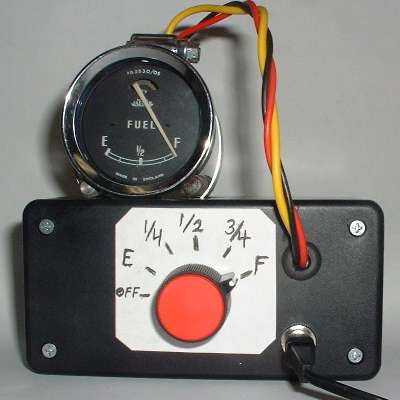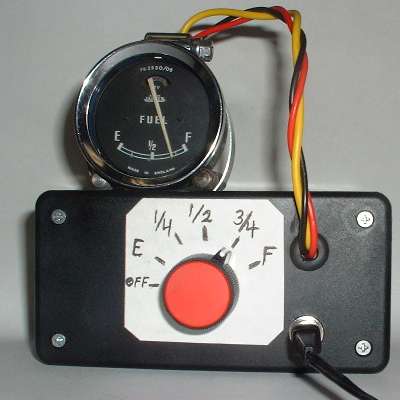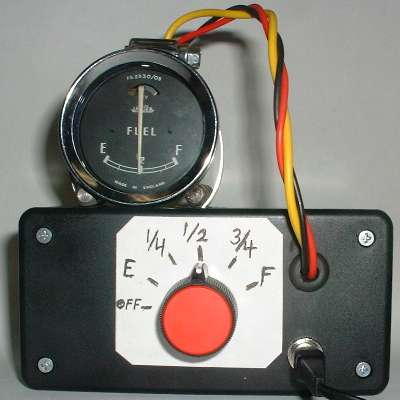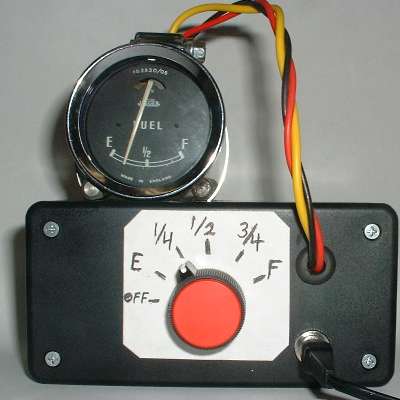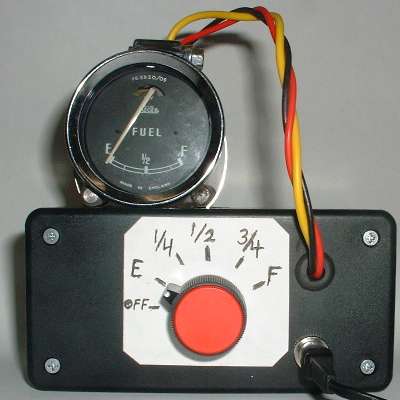The MGA With An Attitude
Here the pictures are showing the fuel gauge already in a nice state of calibration. There was a lot of fussing going on with the gauge horribly out of calibration while I was trying several different techniques, but once I found a sure fire and easy way of doing it the calibration was so easy (although not exactly simple) that I am absolutely elated. Start by running down this sequential set of images showing that it really can be done by a mere mortal.
Notice that the gauge indicator needle is sitting directly on the full mark, and not touching the right side peg. The 68 ohm switch value is within 3% of the real 70 ohm sender unit value.
Notice here that the needle has missed the 3/4 mark by just a smidge. But remember that the resistor value for this switch position is 50 ohms rather than the optimal 51 ohms.
Spot on here at 1/2 tank with 34 ohms on the signal wire. About now I'm starting to wonder just how linear the real sender unit actually is, and whether these results will hold up in the real world.
Right on the mark again at 1/4 tank with the 17 ohms switched in. By now you may have noticed that the graduations on the face of the gauge are not equally spaced, but are closer together near the ends of the scale. It is now obvious that the face was scaled in this manner because of the inherent non-linearity of the gauge mechanism itself, and not because of the mated tank sending unit.
Here the dead short to ground is switched onto the sensor wire. Notice that the needle is sitting on the empty mark and not against the left side peg. It is actually quite easy to make the needle hit the empty mark, even if both of the magnets are badly out of adjustment. When there is zero current in the right side magnet the left side magnet will pull the needle here regardless of the intensity of the magnetic field. As such the left side magnet is not used so much to match the empty mark, but it is used more to adjust the linearity of the gauge when the needle is positioned elsewhere. We'll get to that in a minute. Please continue. |
